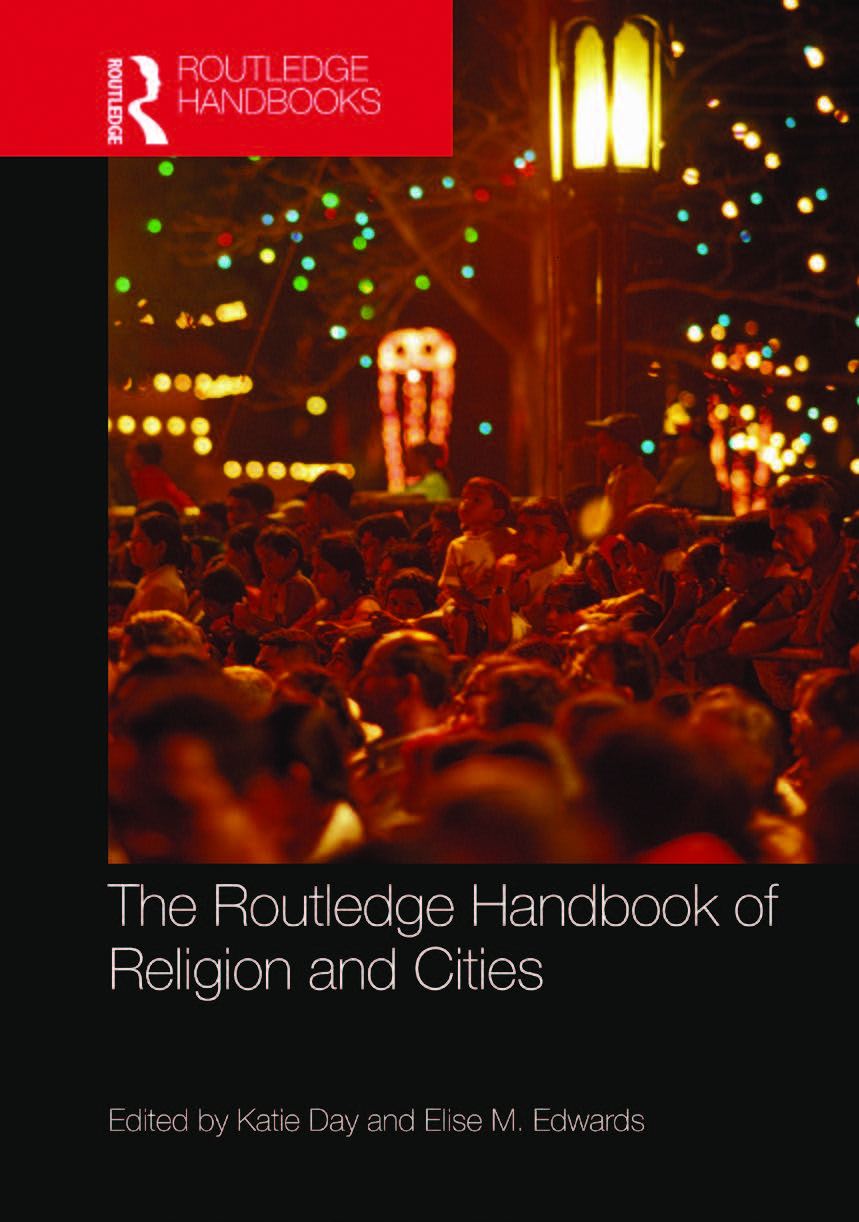

![]() The new book The Routledge Handbook on Religion and Cites (Routledge, $250; e-version, $47.65), edited by Katie Day and Elise Edwards, presents the state of the art on research about religion in the urban context. In the introduction, Day and Edwards write that while there has been renewed attention to religion and cities, there has been less focus on the specific places and spaces and how they interact with religious institutions at the community level. Through ethnographic research, the contributors cover a wide range of cities and their institutions and their interactions with organized religion and unorganized spirituality. The chapters on the more institutional expressions of urban religion show new trends and areas of research, including the new ministry to refugees in Europe, interfaith social activism, and the ever-present pressures of gentrification, particularly the demands and negotiations over religious properties and buildings as they transition to secular uses. The contributors also show how non-institutional religion is fleshed out in urban life, including the role of theology among protestors in Hong Kong, religion and violence in urban contexts, and the religious presence in public art.
The new book The Routledge Handbook on Religion and Cites (Routledge, $250; e-version, $47.65), edited by Katie Day and Elise Edwards, presents the state of the art on research about religion in the urban context. In the introduction, Day and Edwards write that while there has been renewed attention to religion and cities, there has been less focus on the specific places and spaces and how they interact with religious institutions at the community level. Through ethnographic research, the contributors cover a wide range of cities and their institutions and their interactions with organized religion and unorganized spirituality. The chapters on the more institutional expressions of urban religion show new trends and areas of research, including the new ministry to refugees in Europe, interfaith social activism, and the ever-present pressures of gentrification, particularly the demands and negotiations over religious properties and buildings as they transition to secular uses. The contributors also show how non-institutional religion is fleshed out in urban life, including the role of theology among protestors in Hong Kong, religion and violence in urban contexts, and the religious presence in public art.
As the book went to press, Covid-19 became a new challenge for religion in cities and for those studying this subject. At its beginning in early 2020, cities were often stigmatized and associated with contagion, and there was a movement of populations away from cities, the editors note. Although most of the chapters don’t cover the effect of the virus on their research, the pandemic will likely have long-term effects on urban congregations, and the editors note that there are now methods to study such realities with the creative use of new technologies. RW’s editor and sociologist Hans Tokke did manage to include a last-minute epilogue on Covid in their chapter on the phenomenon of “super-diversity” (increasing diversity driven by immigration) in a neighborhood in the New York City borough of Queens. We found that much of the way congregations deal with diversity both internally and in their neighborhood continued in what had become an early epicenter of Covid, as they protected members through shutting down, even while extending their resources to needy residents and health workers. Before (and most likely after) the pandemic, this chapter finds congregations fill various niches in a religious ecology of superdiversity, with some specializing on ministering to specific ethnic groups and others taking a “generalist” role as they seek a wider cultural and geographical following.